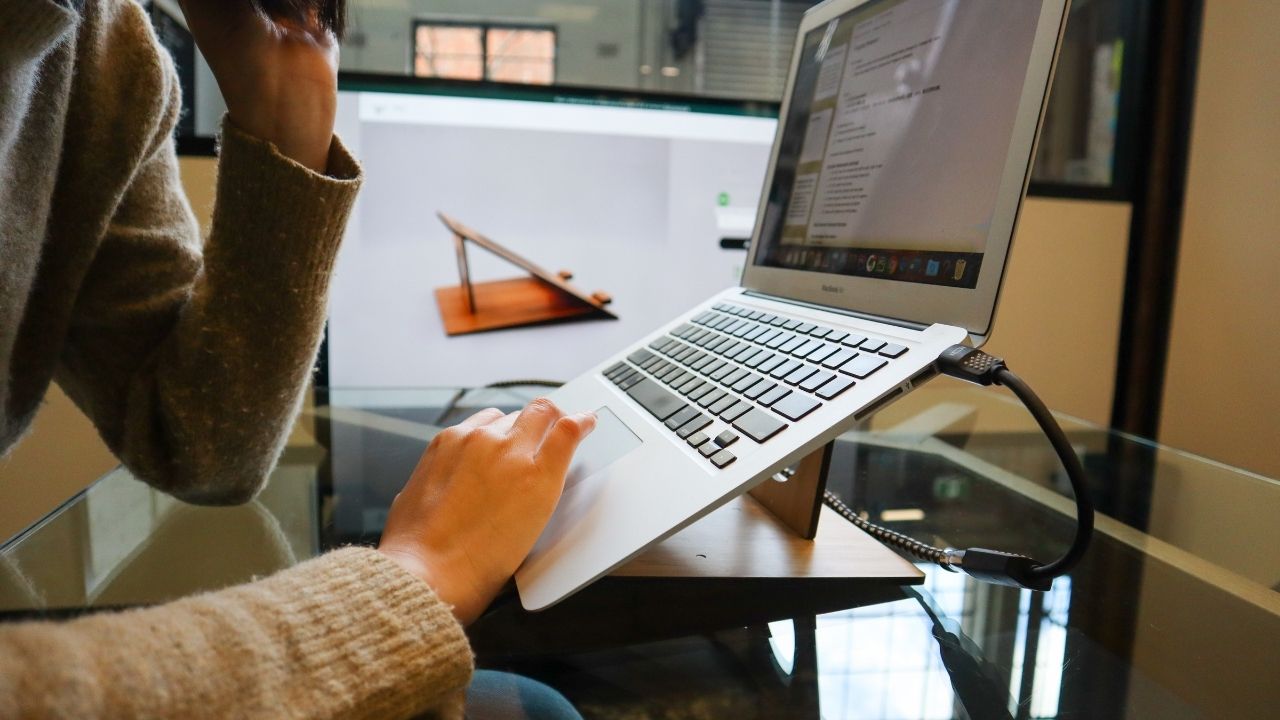
In today's educational landscape, collaborative learning has emerged as an effective method for fostering student engagement, critical thinking, and problem-solving skills.
This article explores the top 10 methods for boosting collaborative learning in the classroom. From the Jigsaw Strategy to Circle the Sage, these techniques offer educators an array of options to facilitate meaningful interactions among students.
Whether you are a seasoned educator or a novice, this comprehensive guide provides valuable insights into enhancing collaborative learning experiences for your students.
Jigsaw Strategy
The Jigsaw Strategy, a popular method for fostering collaborative learning in the classroom, involves dividing students into small groups where each member becomes an expert on a specific topic before sharing their knowledge with the larger group. This technique promotes cooperative learning by encouraging students to work together towards a common goal.
Each group member is responsible for mastering their assigned topic, creating a sense of ownership and accountability. Once individuals have become experts in their respective areas, they reconvene with their peers who have studied different topics. By sharing their knowledge, students are able to piece together the 'puzzle' and gain a comprehensive understanding of the subject matter.
This collaborative puzzle solving approach not only enhances critical thinking and problem-solving skills but also fosters teamwork and communication. The Jigsaw Strategy is a valuable tool for creating an inclusive and engaging learning environment.
Think-Pair-Share
Think-Pair-Share is a collaborative learning strategy that promotes active participation and critical thinking among students in the classroom. This method involves three steps:

- First, students are given a question or problem to think about individually.
- Then, they pair up with a partner to discuss their thoughts and ideas.
- Finally, pairs share their findings with the whole class.
This strategy encourages collaborative discussion and allows students to actively engage in the learning process. By working in pairs, students have the opportunity to articulate their thoughts, listen to different perspectives, and develop their critical thinking skills.
Think-Pair-Share also creates a supportive learning environment where students feel comfortable sharing their ideas. This active learning approach fosters a sense of ownership and deeper understanding of the subject matter.
Three Step Interviews
One effective method for promoting collaborative learning in the classroom is through the use of Three Step Interviews. This technique involves dividing students into pairs and assigning one student as the interviewer and the other as the interviewee. The process consists of three steps:
- Step 1: The interviewer asks the interviewee a question related to the topic or concept being studied.
- Step 2: The interviewee responds to the question and provides their thoughts or opinions.
- Step 3: The roles are reversed, and the interviewee becomes the interviewer, asking a different question to their partner.
This interview technique encourages active participation and engagement among students. It enhances their communication skills, critical thinking, and understanding of different perspectives.
Additionally, Three Step Interviews promote group dynamics by fostering a collaborative and inclusive learning environment. Students learn from each other's knowledge and experiences, promoting a sense of freedom and autonomy in their learning journey.
Round Robin Brainstorming
Round Robin Brainstorming is an effective collaborative learning method that encourages active participation and idea generation among students. This technique involves students taking turns sharing their ideas or answers to a question or problem.
The process begins with one student sharing their idea, and then the next student builds upon it, and so on, until everyone in the group has had a chance to contribute.

This method promotes group communication and allows students to hear different perspectives and build upon each other's ideas. It also fosters creativity and critical thinking skills as students are encouraged to think outside the box and explore various solutions.
Round Robin Brainstorming is an engaging and inclusive approach that ensures every student has a voice and contributes to the collaborative learning experience.
Learning Together and Alone
Collaborative learning fosters the development of independent and interdependent skills, allowing students to engage in both individual and collective learning experiences. Learning together and alone is a crucial aspect of collaborative learning, as it encourages students to participate in collaborative discussions while also promoting individual learning.
Here are three key benefits of incorporating both collaborative and individual learning in the classroom:
- Enhanced critical thinking: Collaborative discussions enable students to share their ideas and perspectives, stimulating critical thinking and problem-solving skills. Individual learning, on the other hand, allows students to reflect on their own thoughts and deepen their understanding of the topic.
- Personalized learning: Individual learning provides students with the opportunity to explore the topic at their own pace and focus on their specific learning needs. Collaborative learning, on the other hand, allows students to learn from their peers and gain different perspectives.
- Accountability and responsibility: By engaging in both collaborative and individual learning, students learn to take ownership of their learning and contribute to the collective knowledge of the group. It also encourages them to be accountable for their own learning progress.
Group Investigation Method
Group investigations can further enhance collaborative learning by promoting active student engagement and fostering deeper understanding of the topic through hands-on exploration and collaborative problem-solving. This method involves dividing students into small groups to investigate a specific topic or problem. In the process, students work together to gather information, analyze data, and draw conclusions.
This approach encourages group dynamics and cooperative learning, as students must communicate, share ideas, and delegate tasks to successfully complete the investigation. By working collaboratively, students not only develop a better understanding of the subject matter but also improve their communication and critical thinking skills.
Group investigations provide an opportunity for students to take ownership of their learning and actively participate in the learning process, making it a valuable tool for educators seeking to boost collaborative learning in the classroom.

Numbered Heads Together
The method of Numbered Heads Together promotes active student engagement and enhances collaborative learning in the classroom. This strategy involves assigning each student in a group with a number. When a question or problem is posed, the teacher randomly selects a number and all students with that number must work together to provide a response. This method encourages students to actively participate and contribute to the group's success.
To emphasize the benefits of Numbered Heads Together, consider the following points:
- Collaborative assessment: By working together, students can assess each other's understanding and provide valuable feedback. This promotes a supportive learning environment where students can learn from one another.
- Accountability measures: With each student assigned a number, everyone in the group is held accountable for their contributions. This encourages active participation and ensures that all students are engaged in the learning process.
- Improved communication skills: Numbered Heads Together requires students to communicate and explain their ideas to their peers. This helps develop their communication skills and fosters a deeper understanding of the subject matter.
Incorporating Numbered Heads Together into the classroom can enhance collaboration, foster critical thinking, and provide students with a sense of ownership in their learning.
Team Pair Solo
Continuing the exploration of effective strategies for collaborative learning, the next method to discuss is Team Pair Solo.
This approach combines both teamwork and individual reflection to enhance learning outcomes. In Team Pair Solo, students initially work in teams to solve a problem or complete a task. This promotes team collaboration and allows students to share their ideas and perspectives.
After the team activity, each student then works individually to reflect on their own understanding and the process they went through. This individual reflection helps students consolidate their learning and identify areas for improvement.
Team Pair Solo provides a balanced approach that encourages both collaboration and individual thinking, fostering a sense of autonomy and freedom in the learning process. By incorporating this method, educators can create an environment that promotes active engagement, critical thinking, and personal growth.

Circle the Sage
Circle the Sage is a method in which the teacher takes the role of a facilitator, while encouraging active participation from students.
It creates a collaborative learning environment where students can engage in meaningful discussions and exchange ideas.
Teacher as Facilitator
As a facilitator in the classroom, the teacher plays a pivotal role in promoting collaborative learning among students. By providing teacher support and creating an environment that fosters student engagement, the teacher can enhance the collaborative learning experience. Here are three key ways in which the teacher can fulfill this role:
- Creating a safe and supportive classroom environment:
- Encouraging open communication and respect among students
- Establishing clear expectations and guidelines for collaboration
- Promoting a sense of belonging and inclusivity for all students
- Facilitating group work and discussions:
- Assigning diverse and balanced groupings to encourage different perspectives
- Guiding discussions and encouraging active participation from all students
- Providing scaffolding and resources to support students' collaboration skills
- Offering constructive feedback and assessment:
- Providing timely feedback to help students improve their collaborative skills
- Ensuring assessments are focused on both individual and group contributions
- Recognizing and celebrating successful collaboration to motivate students
Encouraging Student Participation
To maximize student participation in collaborative learning, educators should actively foster an environment that encourages active engagement and contributions from all students. One effective method for achieving this is through class discussions, where students have the opportunity to express their thoughts, ask questions, and engage in meaningful dialogue with their peers.
Encouraging student participation in class discussions can be done by setting clear expectations, providing prompts or guiding questions, and creating a safe and supportive space for students to share their ideas. Teachers can also employ the 'Circle the Sage' strategy, where students take turns being the 'sage' or expert in a particular topic and lead the discussion. This not only encourages active engagement but also promotes critical thinking, collaboration, and peer learning.
Pairs Check
During a pairs check, students can actively engage in collaborative learning by discussing and reviewing their work with a partner. This method not only promotes collaboration but also allows for collaborative assessment and peer feedback. Here are three reasons why pairs check can be an effective tool in the classroom:
- Increased student engagement: By working with a partner, students feel more motivated to actively participate in the learning process. They can ask questions, clarify doubts, and provide feedback to each other, leading to a deeper understanding of the topic.
- Enhanced critical thinking skills: When students review their work with a partner, they are encouraged to think critically about their answers and explanations. They can challenge each other's ideas, analyze different perspectives, and develop stronger arguments.
- Improved communication skills: Pairs check promotes effective communication between students. They learn to articulate their thoughts clearly, actively listen to their partner's ideas, and engage in meaningful discussions. This strengthens their communication skills, which are essential for future academic and professional success.
Incorporating pairs check into the classroom encourages collaboration, fosters critical thinking, and enhances communication skills, ultimately promoting a more effective and engaging learning environment.

Frequently Asked Questions
How Can the Jigsaw Strategy Be Adapted to Different Age Groups or Subject Areas?
The jigsaw strategy can be adapted to different age groups or subject areas by modifying the content and complexity of the tasks assigned to students. This allows for more meaningful and engaging collaborative learning experiences tailored to specific learning needs.
What Are Some Potential Challenges or Limitations of Using the Think-Pair-Share Method in the Classroom?
Some potential challenges or limitations of using the think-pair-share method in the classroom include student participation, time management, and the need for clear guidelines and adaptations for different age groups and subject areas.
How Can the Three Step Interviews Technique Be Modified to Accommodate Larger Class Sizes?
To accommodate larger class sizes, the three-step interviews technique can be modified by using the jigsaw strategy. This involves dividing students into smaller groups, assigning them different topics, and then having them share their findings with the rest of the class.
Are There Any Specific Guidelines or Best Practices for Facilitating a Successful Round Robin Brainstorming Session?
When facilitating a round robin brainstorming session, it is important to follow successful brainstorming strategies. This includes encouraging equal participation, creating a supportive environment, and providing clear guidelines for generating and sharing ideas.
In What Ways Does the Group Investigation Method Foster Critical Thinking Skills in Students?
The group investigation method fosters critical thinking skills in students by promoting active engagement, collaboration, and problem-solving. Through this approach, students are encouraged to analyze information, evaluate evidence, and generate creative solutions, enhancing their ability to think critically and independently.
 Family Craft ProjectsHome ImprovementCooking and BakingReuse and RecycleDIY GiftsEco-Friendly ProjectsDIY Home SolutionsSeasonal ActivitiesFun and GamesLearn TogetherPrivacy PolicyTerms And Conditions
Family Craft ProjectsHome ImprovementCooking and BakingReuse and RecycleDIY GiftsEco-Friendly ProjectsDIY Home SolutionsSeasonal ActivitiesFun and GamesLearn TogetherPrivacy PolicyTerms And Conditions
